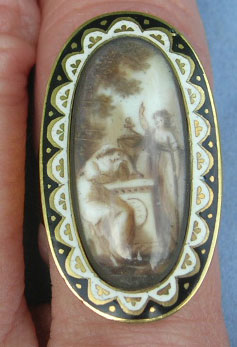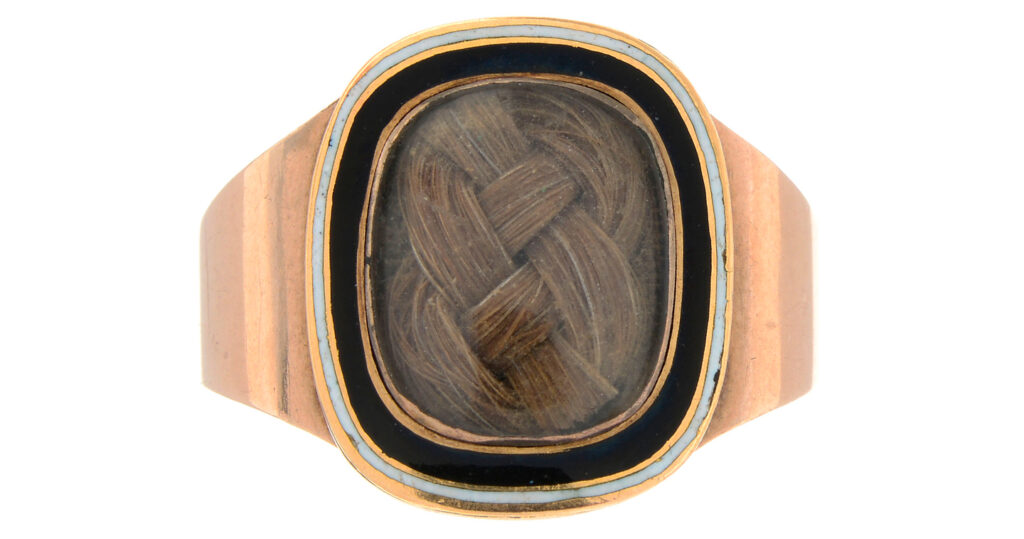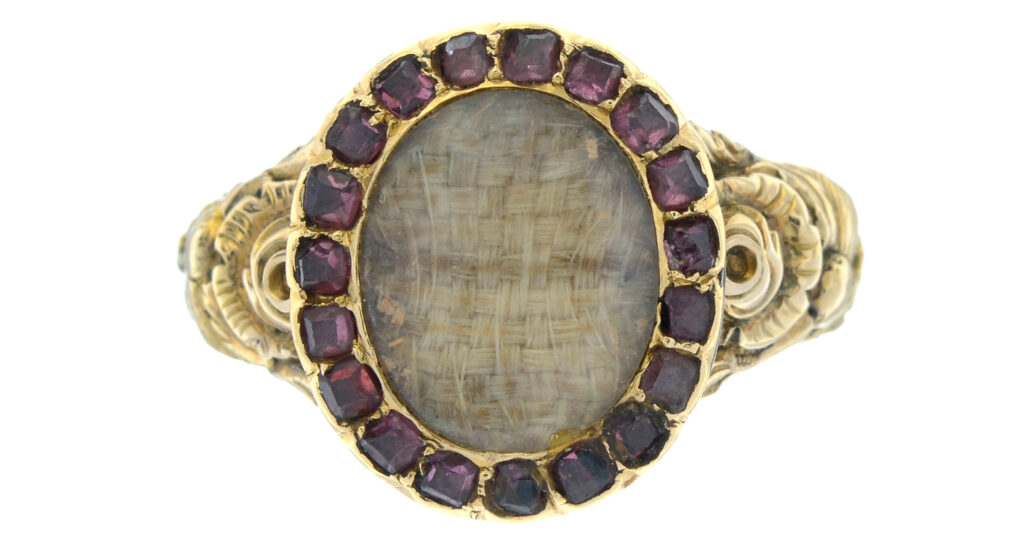Towards Heaven 1792 Sepia Ring
Physical direction and movement in Neoclassical jewels of the late 18th and early 19th century which depict mourning and sentimental scenes is very important to their symbolic relevance.
Often, pieces will show a person or animal in a state of motion or indicating towards a particular element within the depiction. This is very important to note, as they often underline the sentimental nature of the piece or show the proximity of the wearer to the person whom the jewel was commissioned for (be it alive or dead).
In this piece, we have two women, of which the primary woman is the mourner. She is depicted in typical white Neoclassical mourning dress, prostrated on the plinth, with left arm and head reclined on the urn. Here, we have a wonderful depiction in symbolic art, the rendering is truly something to behold. Notice the depth of perspective of the plinth, as it emerges from left to right, with the side of the plinth being darkly shaded. This is due to the figure of the other female casting her shadow over the plinth itself; something which tells us today that this is no ordinary jewel.
Even the urn shows significant shading, as it is placed under the shade of the tree and set back from the mourning female – she certainly takes precedence within the depiction itself. Furthermore, this works in conjunction with the three-dimensional tree, which is built up with hair to raise itself over the two women, urn and plinth. This can be seen on the upper left of the jewel, bordering the piece itself.
Pointing towards the heaven is the other female and she is a curious Neoclassical lady to depict. Her dress is a popular one for the times, cut under the bust and cast around the upper arms. Notice her hairstyle and its interaction with the wind, it’s literally blowing in the breeze. Naturally, the other point of contact for our eyes is her right arm, with her index finger pointing towards the heavens, which aligns with the human remains of the urn.
With the indication of the finger, there is negative space from the sky, tree (and trees in the background) and urn, which works in conjunction with the top of the urn, as this element also has negative space. Heaven and human are connected, which is a wonderful allegory for its time. While I often write about the Neoclassical period as being primarily humanist in its emotions and relation to the self, one cannot assume this means the religious back-bone of English society had dissolved, rather the focus was shifted. We’ll look more into that as we progress into the Gothic Revival era.
Also of note is the oval shape to the ring, as can be seen in contemporary rings from the early 1790s. The navette shape had to accommodate these larger and very detailed sentimental depictions, hence the movement from the 1780s, with their sharper north and south regions. Flanking the depiction is the white/black enamel pattern, which is not uncharacteristic for its times, as this was a popular design.
Further Reading
> Spotlight On: 1788 Sarah Honlett Brooch
> Irish Sister Rings for Thomas Langdale, 1790
> Eliz Legrew Ob 4th July 1791 AE 34 / Sepia Male Mourning Ring








